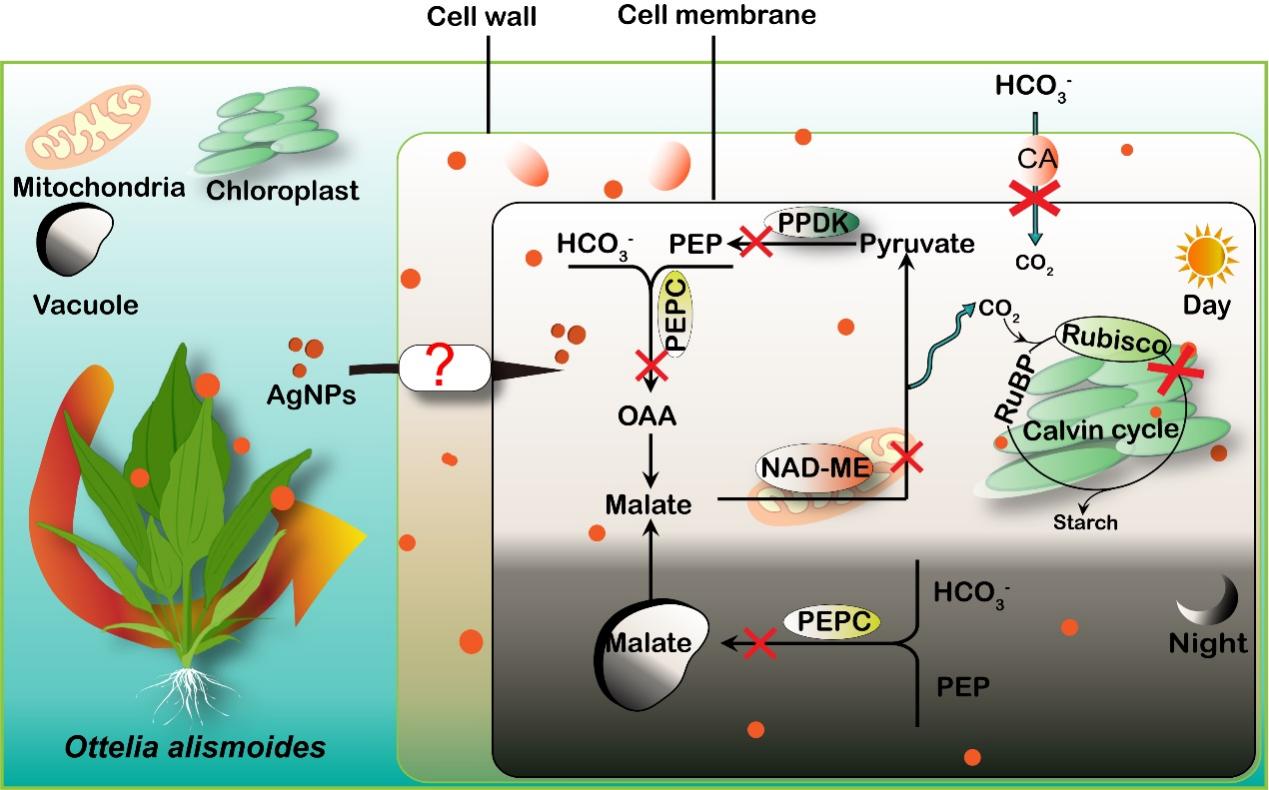Name:JIANG Hongsheng
Tell:
Email:jhs@wbgcas.cn
Organization:Wuhan Botanical Garden
Research Elucidates Effects of Silver Nanoparticles on Inorganic Carbon Utilization of Submerged Macrophyte
2023-02-23
Submerged macrophytes grow underwater that represent a group of higher plants adapting to the aquatic environments. Due to the submersed growth, photosynthesis, the most important biological process on earth, performs in submerged macrophytes underwater, resulting in the inorganic carbon uptake being dramatically distinct from that in terrestrial plants. However, in recent decades, the diversity and abundance of submerged macrophytes have been decreasing, and the contaminants discharged into the aquatic ecosystems could be one of the main factors.
Silver nanoparticles (AgNPs) have become one of the emerging contaminants owing to their worldwide use for the excellent broad-spectrum antibacterial property. However, up to date, side effects of AgNPs on photosynthetic inorganic carbon utilization in submerged macrophytes are rarely known.
Researchers from Wuhan Botanical Garden investigated the effects of AgNPs on inorganic carbon utilization in submerged macrophytes, taking Ottleila alismoides, the only submerged macrophyte with three CO2-concentrating mechanisms, as the material.
Results found that, once the submerged macrophytes contacted with the discharged AgNPs, before absorption, AgNPs immediately inhibited the activity of external carbonic anhydrase located at the periplasmic space thus reducing the capacity of the plant to use bicarbonate.
After being absorbed into the submerged macrophytes, AgNPs mainly aggregated at the cell wall and in the chloroplast. Then the internalized AgNPs significantly inhibited the activity of ribulose 1,5-bisphosphate carboxylase-oxygenase (Rubisco) to fix CO2 thereby blocking the Calvin cycle. Meanwhile, the internalized AgNPs disturbed C4 and crassulacean acid metabolism (CAM) by inhibiting the activity of phosphoenolpyruvate carboxylase (PEPC), pyruvate phosphate dikinase (PPDK), and NAD-dependent malic enzyme (NAD-ME) to alter intracellular malate biosynthesis and decarboxylation.
Due to the divergences of the response to AgNPs among inorganic carbon utilization pathways (different sensitivity of external carbonic anhydrase, Rubisco, PEPC, PPDK, and NAD-ME to AgNPs exposure), the discharged AgNPs could disturb the balance of the species with different inorganic carbon utilization strategies, which may alter the species compositions of freshwater plants communities and the carbon cycle in the aquatic systems, especially the CO2 obligated users and bicarbonate users.
This interference may alter the species compositions of freshwater plant communities and the carbon cycle in aquatic systems, which should be considered in future studies.
Results entitled "Inorganic carbon utilization: A target of silver nanoparticle toxicity on a submerged macrophyte" have been published on Environmental Pollution.

Schematic diagram depicting effects of AgNPs on inorganic carbon utilization of submerged macrophyte (Image by WBG)